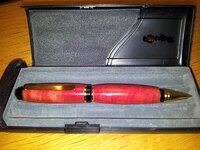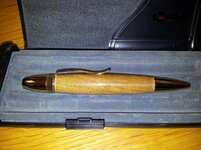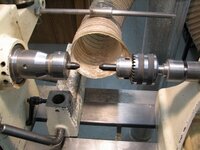Moonshine
Member
Hi All,
Just completed my 13th and 14th pens but on both of them the CA chips or cracks when I separate the blanks from the bushings. It there any way to prevent the CA from bonding to the bushings?
Pen 1: Gold Cigar with Red Ivory - CA-BLO finish
Pen 2: Gold Patriot with Mukwa (sapwood?) - CA-BLO Finish (may be another sort of wood - it comes from an old carving I bought in Zimbabwe in 1995)
Cheers
Jon
Just completed my 13th and 14th pens but on both of them the CA chips or cracks when I separate the blanks from the bushings. It there any way to prevent the CA from bonding to the bushings?
Pen 1: Gold Cigar with Red Ivory - CA-BLO finish
Pen 2: Gold Patriot with Mukwa (sapwood?) - CA-BLO Finish (may be another sort of wood - it comes from an old carving I bought in Zimbabwe in 1995)
Cheers
Jon



